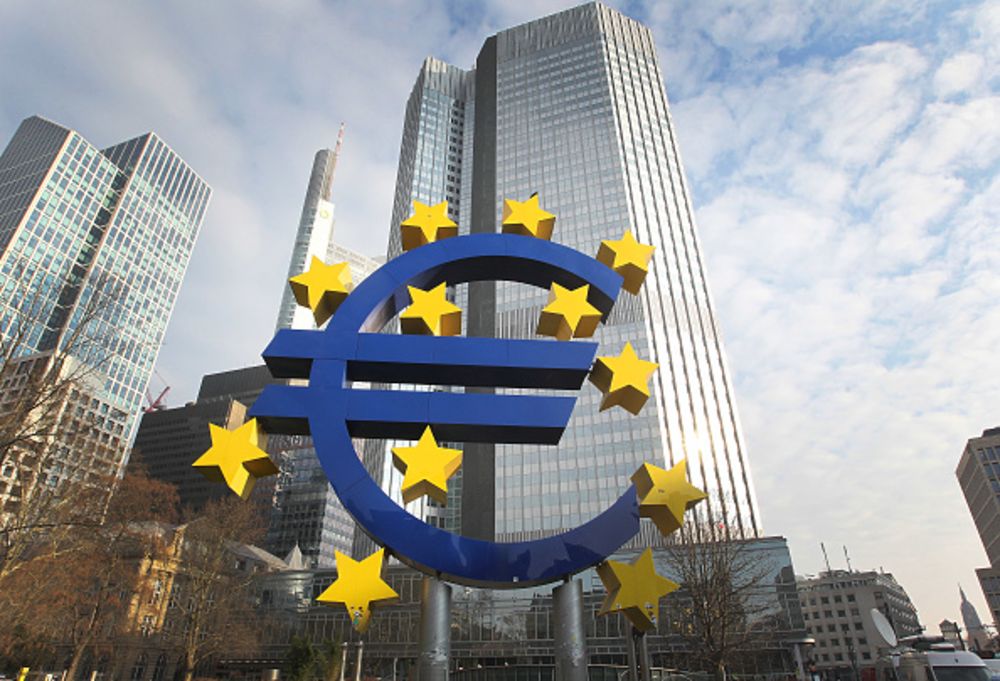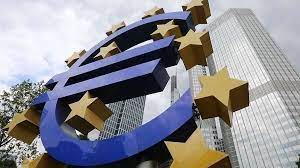|
The inflation rate jumped to 4.1% in October, which is the same as the peak of July 2008. This increase was primarily caused by soaring energy prices on the back of the gas crisis and a steady rise in oil prices, but services inflation was also a contributing factor boosting core inflation, from 1.9 to 2.1%.
The energy inflation rate is surging and is currently at 23.5%. However, there is an expectaiton of falling energy prices in the first half of next year and this, if it happened, would lead to disinflationary pressures. This remains to be seen. Core inflation is made up of steadily increasing goods inflation as businesses pass on their price increases to the consumer, due to the supply chjain price pressure they are facing. This is set to last for some time as price pressures are not likely to ease any time soon and probably well into 2022. The increase in services inflation was more related to base effects from last year than anything else though, so while an increase from 1.7% to 2.1% looks alarming, the monthly rate of 0% inflation reveals cautious price increases despite the strong reopening in terms of demand. Christine Lagarde said yesterday that the ECB is confident that their analysis is correct on how temporary inflation is. The market seems far from confident though as rate hike expectations have been coming forward to within a year from now. The key question for whether that earlier rate hike is justified is when second round effects will come into play. The higher inflation rate will provide a significant basis for very assertive wage negotiationss, which could lead to second round effects on inflation. If this happens quickly enough, the current spell of high inflation may not be as temporary as the ECB suggests. However, wage growth is still very low and has yet to break from a declining trend, but I don't think adds up to temporary inflation. This is begining to look a lot tile something more longer lasting. Watch this space.
0 Comments
Upbeat Sentiment The Eurozone economic sentiment indicator increased somewhat unexpectedly in September to 117.8 from 117.6 in August. Confidence in industry picked up marginally (+0.2), while construction saw a strong improvement in sentiment (+2.0). The supply disruptions don’t seem to be slowing the expansion as the manufacturing sector expects production to pick up in the coming months. Its not all rosy though as confidence fell back in the services sector and retail trade. Amongst the largest EU economies, the ESI rose in Spain, Germany and the Netherlands, while it declined both in France and Italy. Consumer confidence picked up strongly this month on the back of improved labour market expectations and strong hiring intentions also confirm this. However, increasing energy prices could have an impact on consumer sentiment in the coming months. Most of Europe’s energy is imported so higher oil and gas prices could negatively impact income effect and hurt domestic consumption. Supply disruptions and rising energy prices are causing price pressures and these are increasingly being passed through to selling prices. Ultimately, this may keep inflation trending higher for longer.
Today’s numbers bode well for he Eurozone economy and it seems that the recovery has lots of momentum. But lets not get ahead our selves here as inflation is creeping northward as not as transitory as first thought! Third quarter growth forecast looks strong but we may start to see a slowdown from the fourth quarter onwards. We just can’t get away from the fact that higher energy prices will hurt demand and in conjunction with supply chain issues and inflation worries, we are not out of the woods. Could this be down to the spread of the Delata variant? The jury is still out on this but its easy to think that this will probably have an impact. Consumer confidence may take a dip when comes to going out shopping if the fear of COVID-19 once again takes hold, but that doesn't seem to be playing out right now. According to a weekly ONS survey, the proportion of adults visiting a shop for non-essentials is noticeably higher now than it was at the end of May with strady footfall numbers. So what we could be seeing is a degree of rebalancing with more spending moving towards services and away from retail goods. Its also worth noting that spending on fashion was down a bit in June, but still higher than it was at any point in the pandemic before shops reopened in April. Looking forward, what is on the radar for the retail sector? It's looking steady but there is the potential for some stronger headwinds with Delta and other new variants. If the Delta wave subsides, which the modelling data suggests should be happening around this time, and indeed, the actual data suggests that cases are declining, then the future is looking brighter. There is plenty of demand and consumers may have more savings to spend. Whether they actually do spend it is another matter. Those savings are more heavily concentrated in the higher earners who are less likely to spend. Low income earners may have seen savings fall during the pandemic and with furlough schemes ending in autumn with possible redundancies, there is a possiblility that this could impact the high street and retail sales. In summary, we could see incremental gains in retail sales through the rest of the year, which will contribute to the overall GDP number. We may see more rebalancing as services get back into full swing but all of this is predicated on the Delta wave fizzling out into autumn.
However, the union representing workers at BHP’s Escondida mine voted to reject the company’s latest contract offer. The two sides have entered a mediation period, after which the union can initiate a strike if an agreement cannot be reached.
Looking at copper production through the year so far, the International Copper Study Group (ICSG) has estimated that the global copper market had a surplus of 70,000 metric tons through the first four months of the year. The ICSG estimated global copper production rose by 4% through the first four months of 2021 compared with the same period in 2020 and concentrate production rose by 6%. In Chile, the world’s top copper producer, copper mine production fell by 2% and its concentrate production rose by 3%. Elsewhere, Peru, the second largest producer, saw its copper mine production rise by 10% year over year during the four-month period. However, Peru’s production during the period fell by 27% compared with the first four months of 2019. The ICSG noted that Indonesia’s copper output rose by 80% due to a ramp-up at the Grasberg mine. Looking at global refined copper, production rose by 4% during the first four months of the year, however, Chile’s refined copper output dropped by 8%. Global refined copper production from scrap rose by 3% during the period. From a price perspective, the market has been trading sideways for a month but the LME three-month copper price has made gains over the last two weeks. Traders are now focused on the outcome of the labour situation at BHP's Escondida mine.
The recovery from the lockdown is looking healthy with a 1.5% increase in retail sales in June. Indeed, sales are stronger than last year and this shows robust demand. The vaccine rollout is slower than expected but making progress as restrictions are being lifted. These factors are providing more tailwinds for the economic recovery.
The growth in July was mainly seen in non-food products, while internet sales decreased. So what we are seeing here is more of a rebalancing between online sales and bricks and mortar sales. Consumers are regaining confidence in venturing back to the shops safely. We are not out of the woods yet because we've still got concerns on the Delta variant. Looking forward to to the coming quarter, it remains to be seen whether we'll see some follow with good retail sales numbers in July. Was this just a good months with demand catching up after the lockdowns? We'll have to wait and see on that one. We've got some headwinds in terms of the risks presented by the Delta variant and the potential for more restrictions and lockdowns. However, we've got some strong tailwinds coming from strong consumer demand and this will certainly add to the positive outlook for GDP as the Eurozone economies continue to recover.
The USDA has quite a challenge in trying to calculate these early yield figures, especially with so much time left in the growing cycle. August estimates historically align with January final tallies, though large shifts are not unusual as evidenced in last year’s revisions.
There is also a strong probability that Brazilian corn exports will fall dramatically this month with trade forecasts showing exports of 118 million bushels of corn in August, down from 264 million bushels the same time a year ago. This is a result of the La Niña-induced drought this year that has left Brazilian corn production tight and not able to fulfil strong export demand. Brazil’s top corn customers include Egypt, Vietnam, Taiwan, and Iran. These countries will likely be forced to turn to other supplies in the U.S. or Black Sea region in light of Brazil’s corn shortage. Weekly ethanol production data will be released today and there is a strong probability that this won't be greater than the 42.5 million – 44.8 million gallon/day mark. Last week’s report saw weekly output volumes shrink over 1% to 42.6 million gallons/day as stockpiles rose on flat consumer gasoline demand. Weekly ethanol stocks rose 1% last week to 955 million gallons which is the highest stockpile since the cold snap in mid-February. Weekly gasoline usage averaged 392 million gallons/day for the week ending July 23rd, which is in line with the 356 million – 398 million gallon/day, weekly range in which Americans have been purchasing gasoline this summer. Last week's report provided a glimmer of hope for the ethanol industry in that ethanol blending by refiners increased 2.5% on the week to 39 million gallons/day. If today’s report shows an increase in blending volumes, even a small increase, then the future maybe a little bit brighter for ethanol and corn producers across the U.S. However, the ethanol industry is largely dependant on drivers and what driving activity looks like coming out of the pandemic, particularly in the summer period. Ethanol is increasingly dependant on gasoline consumption breaking out of the current summer usage range to raise ethanol prospects for corn growers. The GDP number confirms that the Eurozone ecomonic recovery is well underway, however, it hasn't been an easy ride. Supply chain issues are still impacting certain areas of the economy and the vaccine rollout hasn't progressed as quickly as expected, however, demand has been strong. Those supply chain issues really impacted the German economy more than other countries and this was largely the result of it's large car industry, which has been particularly hard hit. Countries that are further behind pre-pandemic levels like Italy and Spain saw impressive growth rates of 2.7% and 2.8%, respectively. Looking forward to the third quarter, we can see that the Delata variant is causing some issues with the possibilitiy of more restrictions being enforced. In addition, supply chain problems continue to impact manufacturing production and these factors could cause some headwinds. Having said that, the economic recovery is expected to continue across the Eurozone, with tailwinds provided by strong demand both domenstically and internationally. The recent release didn’t provide much evidence of more structural inflation as core inflation fell back from 0.9% to 0.7%. However, in Germany core inflation rose strongly as a result of VAT effects but other countries have seen a drop that more than counteracts this effect. Non-energy industrial goods inflation, which has been rising over recent months, fell back to 0.7% from 1.2%. So what does this tell us? Well, it indicates that the price pressures related to transport costs and input shortages are not yet translating into increasing consumer goods prices. Services inflation only increased from 0.7% to 0.9%, which is a small increase. However, it is still highly probably that we'll see goods and services inflation heading higher so this adds to the upside inflation risk in the months ahead. Another important factor is the labour market and that really needs to perform well in the months ahead. The unemployment numbers came in today showing that unemployment declined to 7.7%. This confirms that the labour market is getting tighter on reopening. Its worth noting that the ending of furlough schemes could impact these numbers, however the current status of the job market may well add some more upside risk to inflation over the medium term.
However, Fed Chair Jerome Powell is sticking to his story that inflation pressures are largely transitory and there is no need to signal an imminent shift in policy. Today's FOMC statement reiterated this position but we also see the hints that the Fed will start to taper later this year. The Fed funds target rate has been left at 0-0.25% with the monthly QE asset purchases left at a total of $120bn with a split of $80bn Treasury securities and $40bn agency MBS.
In previous statements, it was stated that these purchases would continue until “substantial further progress has been made” towards achieving maximum employment and the Fed consistently hitting its inflation target. However, the Fed has seen the data and knows that the “the economy has made progress towards these goals”. This is a significant step in the policy normalisation process. With that said, the employment level in the U.S. remains more than 6 million lower than before the pandemic and with growing uncertainty about the trajectory and impact of the Delta variant, we don't think that tapering is imminent. We are just seeing a slow march towards this innevitable outcome as more FOMC members express their viewpoints on inflation running too hot. Indeed, the Fed’s own 'dot plot' chart of individual members' predictions for the interest rate path has seven out of 18 FOMC members looking for a 2022 rate rise. It only takes three of the 11 members not favouring a 2022 rate hike as of June to switch sides to bring the medium in favour of action next year rather than 2023. To add fuel to the fire, the strong stimulus fuelled demand and suply side issues are leading to more persistent price pressure. The supply side is not keeping up with demand and hampering the recovery. This could show up in tomorrow's GDP data. In addiiton, the difficulties in finding workers to fill vacancies continues and this is leading to wage pressures The June FOMC meeting saw Fed members shifting their collective view to 2023 as a starting point for interest rate increases. Its interesting that not so long ago, Fed members had their sights set firmly fixed on 2024 for the next rate hike. How things have changed thanks to an economy that is continuing to grow strongly and inflation running hot. However we look at this, tapering is widely accepted and expected now. Its unlikely that the Fed will be able to surpise the market in the coming months. Indeed, the rather muted reaction in the FX market to the FOMC statement signalled that a slightly more hawkish message was largely priced in.
Spring wheat harvest is slated for an earlier start this year with 97% of the crop already headed out – if it was able to reach that stage amid the ongoing heat stress. As of July 25, 3% of the crop had been harvested with the majority of combining activity centering in Washington (12% complete) and South Dakota (21% complete).
The dry weather has allowed combining rates for winter wheat crops to accelerate as harvest activity moves further north. The USDA estimates 84% of U.S. winter wheat acres were harvested as of Sunday, up 11% from the week prior thanks to limited rainfall and 3% ahead of the five-year average. Soft red winter wheat yields and protein are largely in line with 2020 results as the last fields in Northern Michigan are harvested. Hard red winter wheat yields have been more variable across the Plains, but early estimates suggest protein contents could rise above five-year averages thanks to dry growing conditions. Soft white winter wheat harvest in the Pacific Northwest ramped up over the past week, with nearly 20% of the crop out of the field as of late last week. But severe drought will likely reduce the number of acres harvested this year and early protein estimates point to variable results for millers. According to NOAA's short-range forecast, there is an end in sight for the recent heatwave. Hot and dry weather will likely dominate the forecast early this week but temperatures are expected to moderate across the Corn Belt by Thursday. The cooldown is good news for crops. |
AuthorTim the trader Archives
January 2025
Categories |
Site powered by Weebly. Managed by iPage










 RSS Feed
RSS Feed